
Photo: The exterior of the Putnam Collection Center | Sarah Gilbert
Room to Grow
In 2010, Lowell Observatory was facing a storage issue. The Slipher Building’s attic and basement were filling up with rare books, historic documents, antique stargazing equipment, and more, with new items arriving all the time. Not only were the artifacts being exposed to harmful elements like uncontrolled temperatures and the possibility of water damage from flooding and fire sprinklers, but there simply wasn’t enough space for all of it. That same year, the decision was made to begin raising funds for a new archive facility that could accommodate and protect precious items from throughout Lowell’s history. Thus, the Putnam Collection Center (PCC) was born. Completed in 2014, this state-of-the-art, 8,000-square-foot facility contains a research library, a processing room with a brand-new book scanning station, staff offices, temperature-controlled storage rooms, and equipment for emergency salvaging of items that have been exposed to water, pests, mold, and other harmful factors.
Lobby Area and Public Exhibits
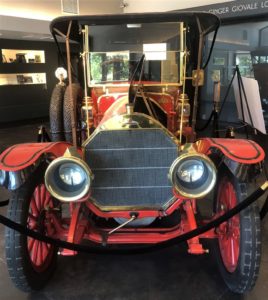
Percival Lowell’s car, nicknamed “Big Red.”
Though access to much of the Collection Center is restricted, its main lobby serves as an exhibit hall that observatory guests can visit.* Among the items on display here are Percival Lowell’s first telescope and his 1911 Stevens-Duryea automobile (which is still in working order), the spectrograph that V.M. Slipher used to capture the first evidence of the expanding nature of the universe, and a guestbook containing signatures and messages of thanks from the Apollo astronauts.
*The Putnam Collection Center is currently closed to visitors due to COVID-19, but you can still enjoy our selection of online exhibits.
Processing Room and Collections Repository
Upon arrival to the PCC, artifacts are assessed and catalogued in the processing room and treated with any preservation methods that might be necessary. If an artifact has been exposed to things that could spread to other items, such as mold or pests, they are immediately placed inside a specialized freezer that looks a lot like the industrial-sized walk-in freezers you might see in the kitchen of a restaurant. The inside is lined with several shelves for items to be placed on, and the internal temperature is set to -25 degrees Fahrenheit. Keeping items at this temperature for an extended period of time will kill pests and slow mold growth, preventing them from damaging the item further or spreading to other items.
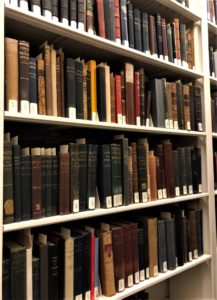
Rare books from Percival Lowell’s personal collection.
The processing room also contains a brand-new, state-of-the-art book and document scanning station. Even with this new technology, the process of scanning even a single book is a time-consuming one; not to mention the level of extreme care that must be taken when handling items that are well over a century old. Librarian and archivist Lauren Amundson estimates that to date, only 1% of the collections currently being stored in the PCC have been digitized and uploaded to the web. As of now, items are mostly digitized as needed, such as when they are requested by historians and scholars for research purposes. Qualified researchers can also request physical or digital copies of titles from the PCC’s expansive research library and archives.
After items have been catalogued and inspected for damage, they are moved to a temperature-controlled collections repository. In this warehouse-sized room, thousands of pictures, antique instruments, priceless artifacts, rare books, historic documents, and other items are meticulously organized on hand-cranked rolling shelves. Just a few of the treasures stored in the repository include a sunhat belonging to Percival Lowell, letters from Carl Sagan and Albert Einstein, and full collections of publications from observatories around the world. The repository has a floor to ceiling window that looks out into the PCC’s lobby area, offering guests a glimpse into this restricted area, as well as a full view of one of Clyde Tombaugh’s telescopes.
Looking Ahead
New collections are arriving at the observatory all the time, but the PCC still has plenty of space to store Lowell’s collections. Librarian and archivist Lauren Amundson predicts that as the observatory shifts from paper documents to digital files, the need for physical storage space will be greatly reduced. What the PCC will need moving forward, however, is a bigger staff. At present, Lauren and Stacy Christen, Lowell’s archive and museum specialist, are the only two staff members who carry out day-to-day operations at the collection center. In the past, tasks like scanning documents and photos and cataloguing new items were carried out by volunteers, but Lowell’s volunteer program has been on hold for over a year to help deter the spread of COVID-19. Lauren hopes to have volunteers back in the PCC soon.
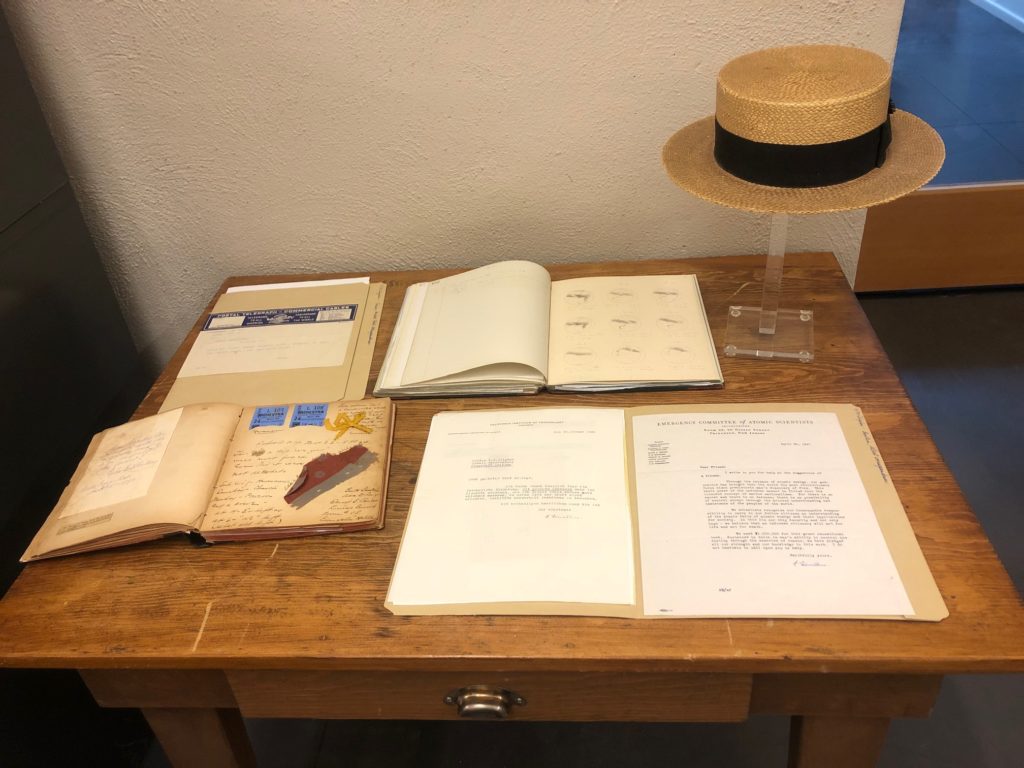
From top left: The telegram relaying Venetia Burney’s suggestion of the name “Pluto” for the newly discovered planet (and an accidental misspelling of her name), a sketchbook containing some of Percival Lowell’s drawings of Mars, Percival’s sunhat, a scrapbook belonging to Wrexie Leonard, and a letter to the observatory from Albert Einstein. 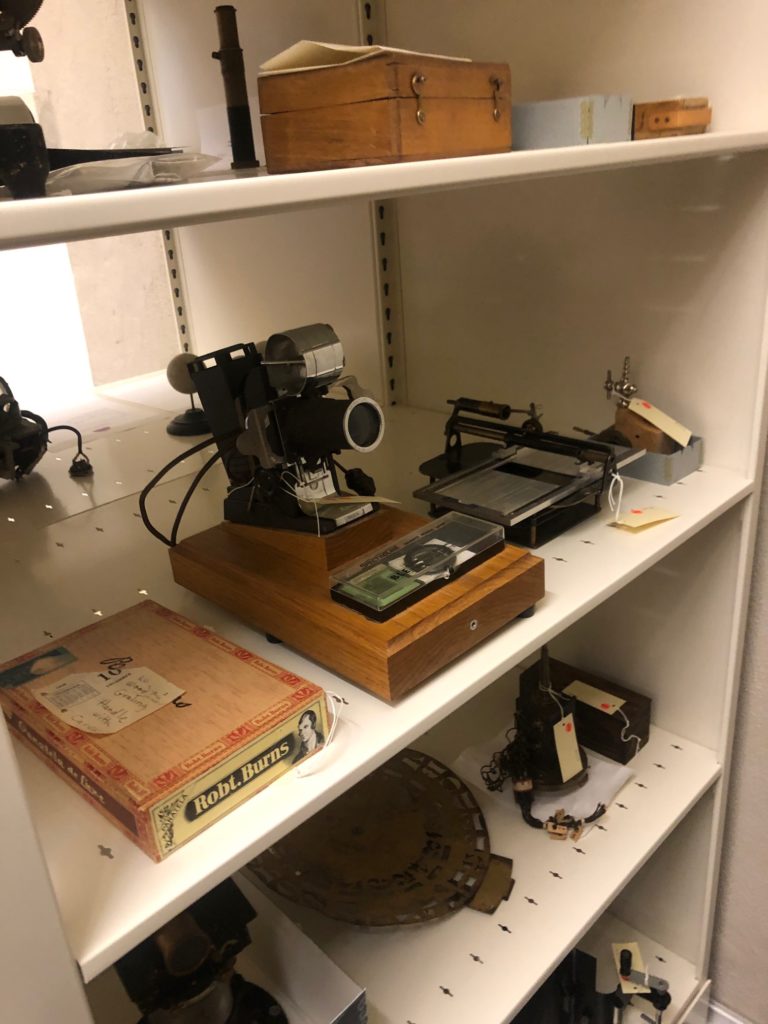
Pieces of antique equipment. 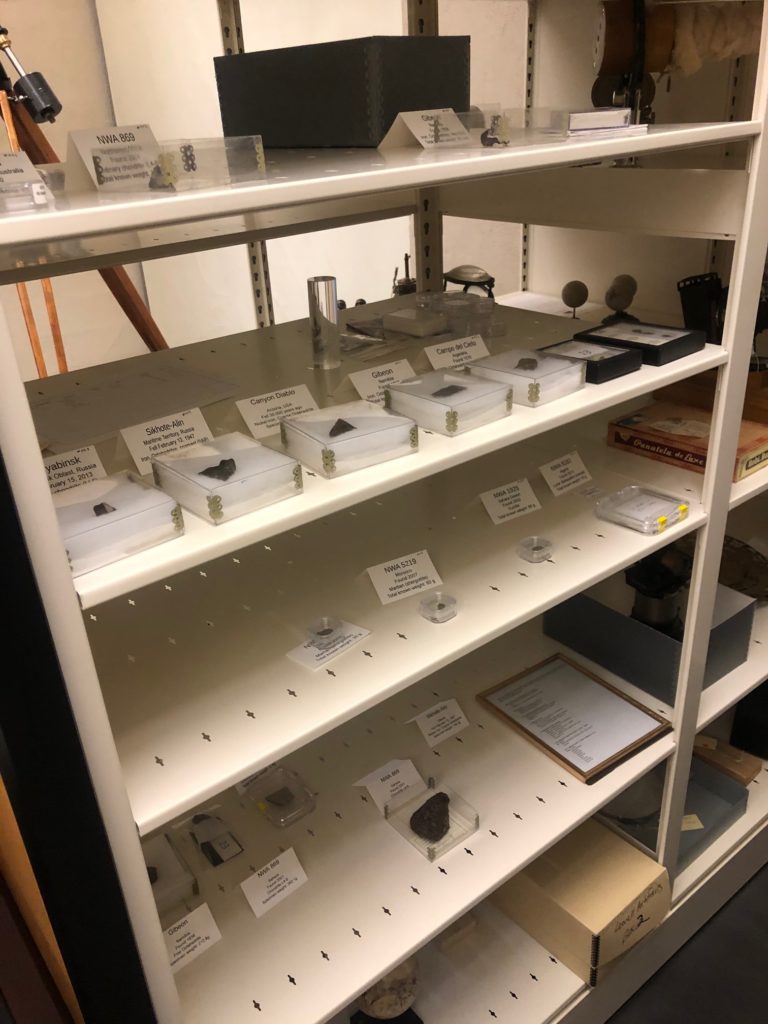
A collection of rare meteorite samples from sites around the world.